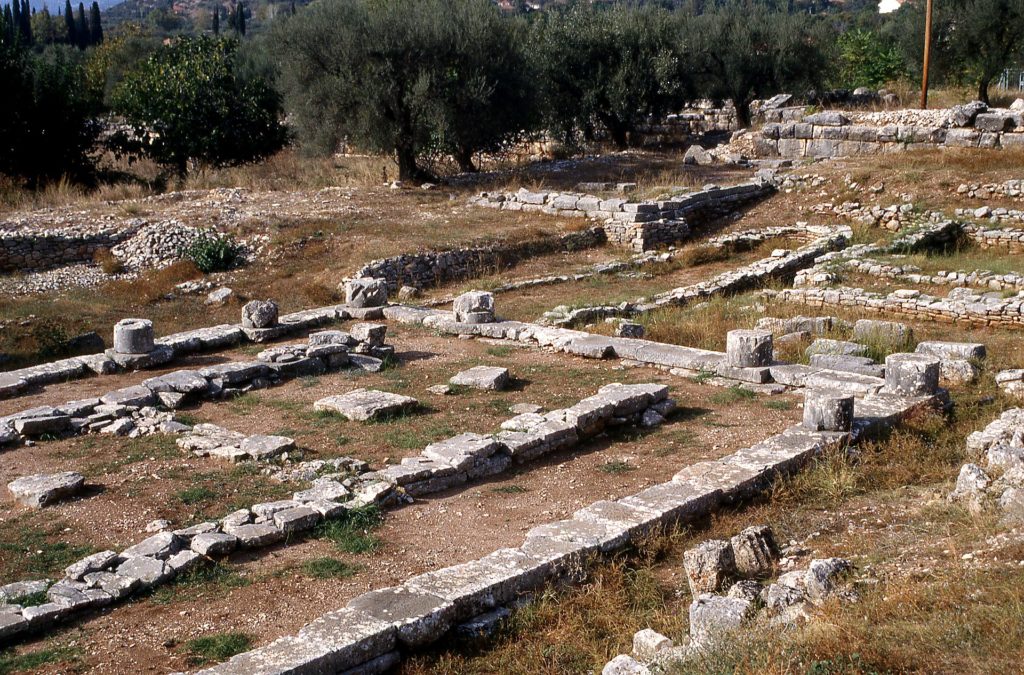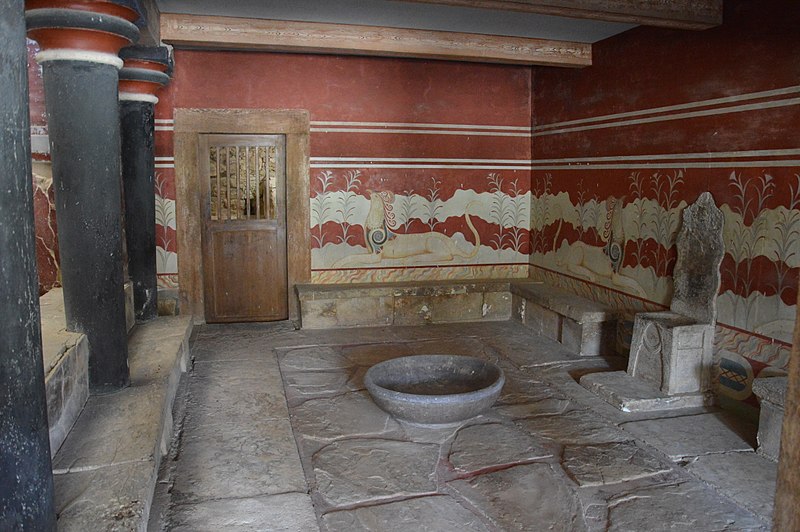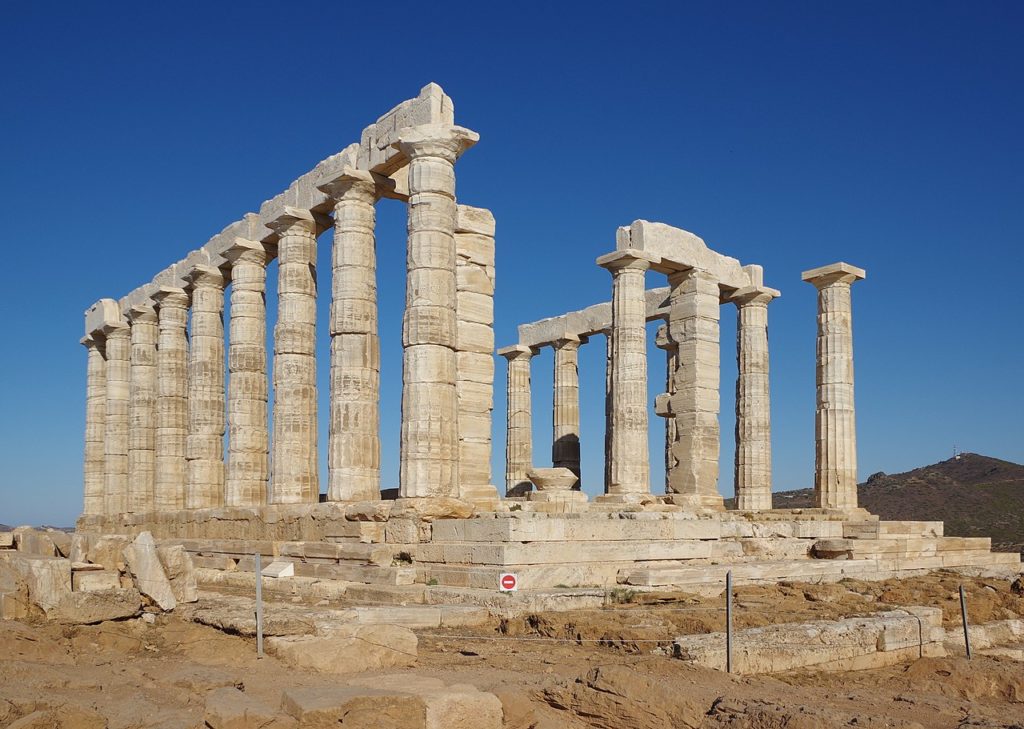
The idea of ancient Greek temples made of wood seems strange today given that the collective mind goes straight to the marble Parthenon structure or the temple of Olympian Zeus.
The first things that come to mind at the mention of ancient Greece are imposing marble temples, beautifully carved statues, and scattered marble remains of palaces.
However, the use of wood for construction in ancient Greece was common, both in public and private buildings, but ultimately, as it is natural, this fragile material could not be preserved for centuries. Yet, in watertight places, protected from atmospheric effects such as inside marble columns, it can be preserved.
In excavations, archaeologists have found intact cubes of cypress, cedar, and cornus. Olive wood has also been discovered on rotation axes.
In addition, the various stone-built temples, many of which have been preserved to this day, are essentially an alternative to traditional wooden forms that were common in Greece since the Minoan years.

Therefore, it becomes clear that, in ancient Greece, wood was used for the construction of temples. The use of stone began in the late seventh century BC and became the norm during the sixth century.
The stone architecture made the buildings more durable, and today, we have several timeless stone monuments to admire.
Temples of Wood
The Assassin’s Creed Odyssey video game, set in ancient Greece, recreates the architecture of the time, including wooden temples among other buildings. This has proven to be based on historical reality.
The game’s portrayal of these structures is consistent with archaeological findings and records. It showcases the early use of wood in temple construction and its gradual replacement by stone.
The Minoans (300 – 1100 BC) used to make columns made of cypress tree trunks, as cypresses are common in the Mediterranean. The columns at the Palace of Minos in Knossos, built as early as 1700 BC, are thinner at the top and wider at the bottom to create the illusion of greater height.
This is the result of inverting the cypress trunk to prevent sprouting once in place. The columns at the Palace of Minos were painted red and mounted on stone bases with round, pillow-like capitals.
Temples with wood columns have been found in the Mycenaean Civilization (1700-1100 BC) with a good example being the Temple of Artemis at Raceta in Achaia. This belongs to the end of the Geometric Period and has surviving stone bases from the wooden colonnade.
Ancient Greek temples, built around 800 BC, were made of wood, which was easier for use in construction than stone. They were long rectangular buildings with a wrap-around porch supported by columns made of tree trunks and thatched or tiled roofs.
Another example of a temple with wooden columns is in Kalapodi in the Phokis region. It was built between 550 and 540 BC, according to Pausanias. The temple was burned by the Persians in 480 BC in retaliation against the Phokians for their involvement in the Battle of Thermopylae.
Early ancient Greek temples were primarily wooden structures. The Temple of Apollo in Thermo of Aetolia, representing the primary temple building during the time period, serves as an example.
The temple of Artemis Orthia in Sparta, dating back to the ninth or eighth century BC, followed that type of wooden construction, demonstrating the prevalent use of wood in early Greek temple architecture.
Yet another example of the use of wood in ancient Greek architecture is the temple of Hera at Olympia, also serving as an indication of the gradual shift from wood to stone. Its initial wooden structure underwent transformation that lasted for centuries.
Types of Wood
Ancient Greeks appear to have had a vast knowledge of wood regarding hardness, durability, resistance to compression or bending, and their chemical reactions when exposed to moisture or dryness. Furthermore, they were aware that the same wood might have different qualities depending on age, the season of the year it was cut, and its origin.
For example, oak was used for the construction of entire temples, threshold arches, columns in underground structures, and roofs. Holly, an oak species, was mainly used in luxury door handles and as wheel axles. Figtree wood was useful for vertical supports and scaffolding. Lastly, Cedar had a long life and could support heavy weights. It was good for use in large dimension slabs.

Types of cedar such as spruce and pine were even used for shipbuilding purposes, as it had the advantage of being sticky. Cypress is resistant to decay, moisture, and time. The particular wood is also long, and its construction value is equal to that of cedar.
Walnut, a solid and durable wood was used in underground structures and ceiling beams. It is also good for planking. Beech does not rot in water but is optimized by it instead. It was used for overhangs and pegs, while olive wood was utilized for small beams and vertical piles, timbering brick walls, and for wedges, grafts, and columns.
Ebony is a black wood. It is solid and durable and was used in luxury constructions. A notable example is the statue of Zeus by Phidias, crafted from ebony wood and adorned with gold and ivory. It stands at a remarkable 12.4 meters tall (40.7 feet) and is also indicative of the fact that there were many statues carved from wood that did not endure the test of time.
See all the latest news from Greece and the world at Greekreporter.com. Contact our newsroom to report an update or send your story, photos and videos. Follow GR on Google News and subscribe here to our daily email!



